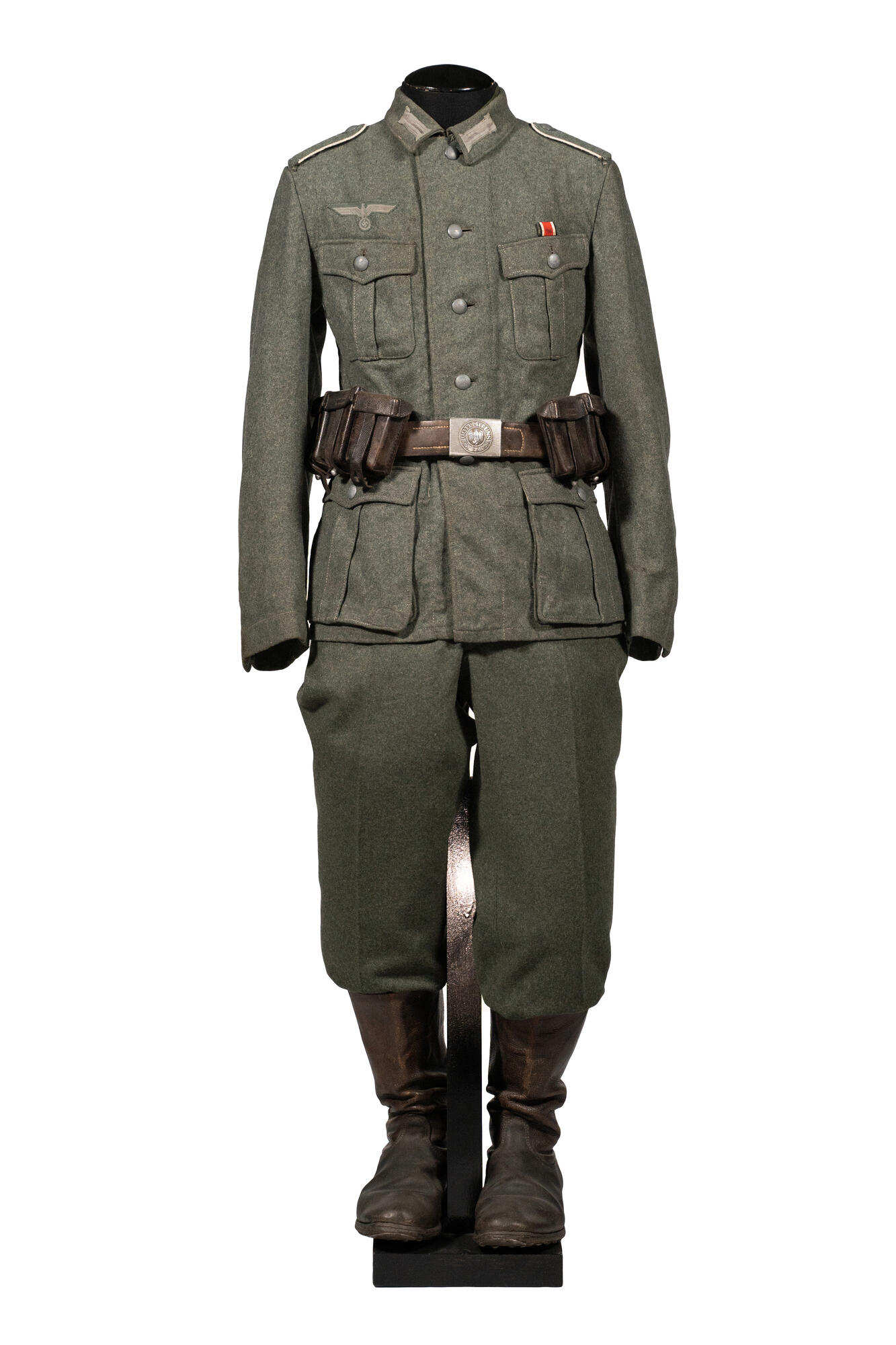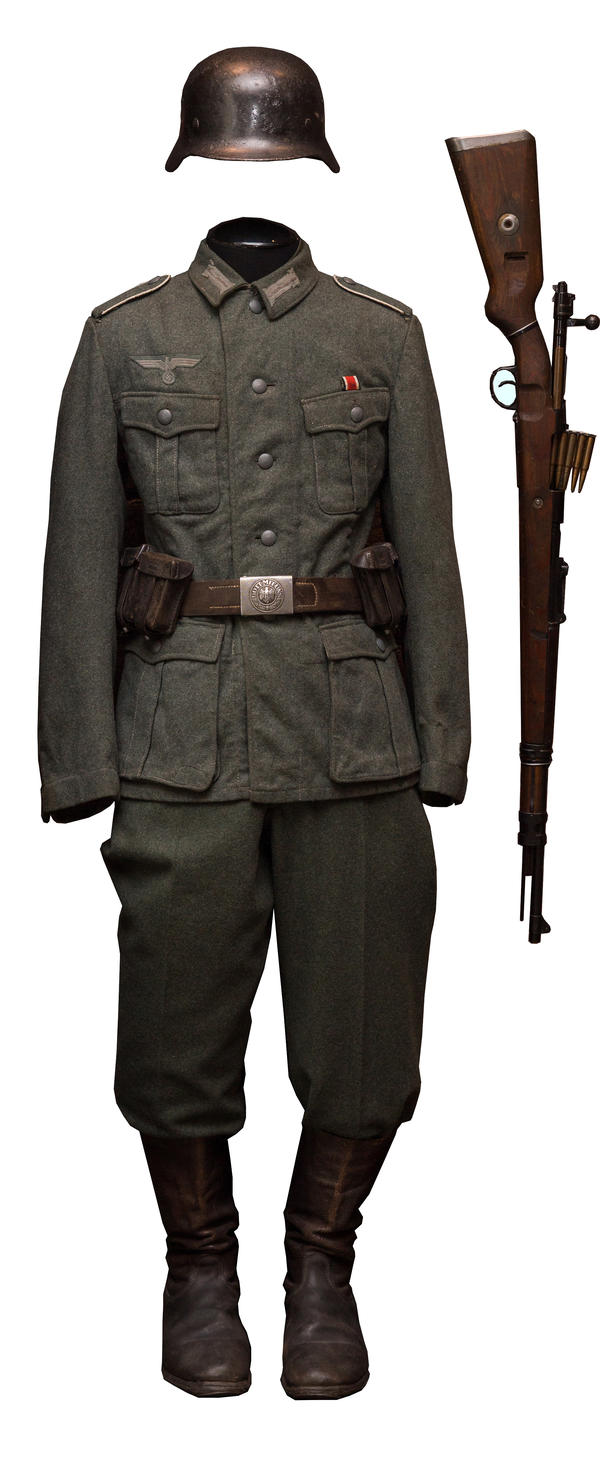The exhibition titled “The Feat of the Army” includes the uniform of a German soldier and the standard service weapon of the Wehrmacht — a Mauser rifle.
The Wehrmacht consisted of the army, the navy, and the air force. The law on the establishment of the German armed forces came into effect on March 16, 1935, two years after Adolf Hitler had come to power. After the adoption of this law, changes were also made to military uniforms.
The new uniform was designed by Karl Diebitsch, a graduate of the Berlin Academy. Diebitsch also came up with the uniform’s famous emblem. The final version of the uniform was prepared in cooperation with the designer Walter Heck. Interestingly, the uniform was produced at the factories of Hugo Boss. Back then, the fashion designer was virtually unknown, but nowadays his brand is popular throughout the world.
The German uniform was made of wool. The collar patches used a color code to identify the branch of service. The belt had a buckle with a round medallion. It depicted the Imperial Eagle holding a swastika in its claws, encircled with the inscription “Gott mit uns” (“God is with us”), and an oak leaf wreath. It was important whether the eagle was looking over its left or right shoulder. The eagle looking to the right from the viewer’s point of view symbolized the Nazi Party, while the eagle looking to the left represented the country. Until 1935, the belt buckles of soldiers featured the eagle looking to the left, and later — to the right. In combat, German soldiers wore helmets. They were made of molybdenum steel, and their thickness and composition ensured protection even against large fragments and pistol bullets. Since the head was the most visible part of the body during battles, the helmet’s recognizable shape allowed German soldiers to use it as an identification system and to distinguish between allies and enemies at large distances.
The Mauser rifle was the most widely used firearm of the Wehrmacht. It was designed by the famous inventor Paul Mauser in 1895. Germany manufactured over fourteen thousand Mauser rifles.
The Wehrmacht consisted of the army, the navy, and the air force. The law on the establishment of the German armed forces came into effect on March 16, 1935, two years after Adolf Hitler had come to power. After the adoption of this law, changes were also made to military uniforms.
The new uniform was designed by Karl Diebitsch, a graduate of the Berlin Academy. Diebitsch also came up with the uniform’s famous emblem. The final version of the uniform was prepared in cooperation with the designer Walter Heck. Interestingly, the uniform was produced at the factories of Hugo Boss. Back then, the fashion designer was virtually unknown, but nowadays his brand is popular throughout the world.
The German uniform was made of wool. The collar patches used a color code to identify the branch of service. The belt had a buckle with a round medallion. It depicted the Imperial Eagle holding a swastika in its claws, encircled with the inscription “Gott mit uns” (“God is with us”), and an oak leaf wreath. It was important whether the eagle was looking over its left or right shoulder. The eagle looking to the right from the viewer’s point of view symbolized the Nazi Party, while the eagle looking to the left represented the country. Until 1935, the belt buckles of soldiers featured the eagle looking to the left, and later — to the right. In combat, German soldiers wore helmets. They were made of molybdenum steel, and their thickness and composition ensured protection even against large fragments and pistol bullets. Since the head was the most visible part of the body during battles, the helmet’s recognizable shape allowed German soldiers to use it as an identification system and to distinguish between allies and enemies at large distances.
The Mauser rifle was the most widely used firearm of the Wehrmacht. It was designed by the famous inventor Paul Mauser in 1895. Germany manufactured over fourteen thousand Mauser rifles.



